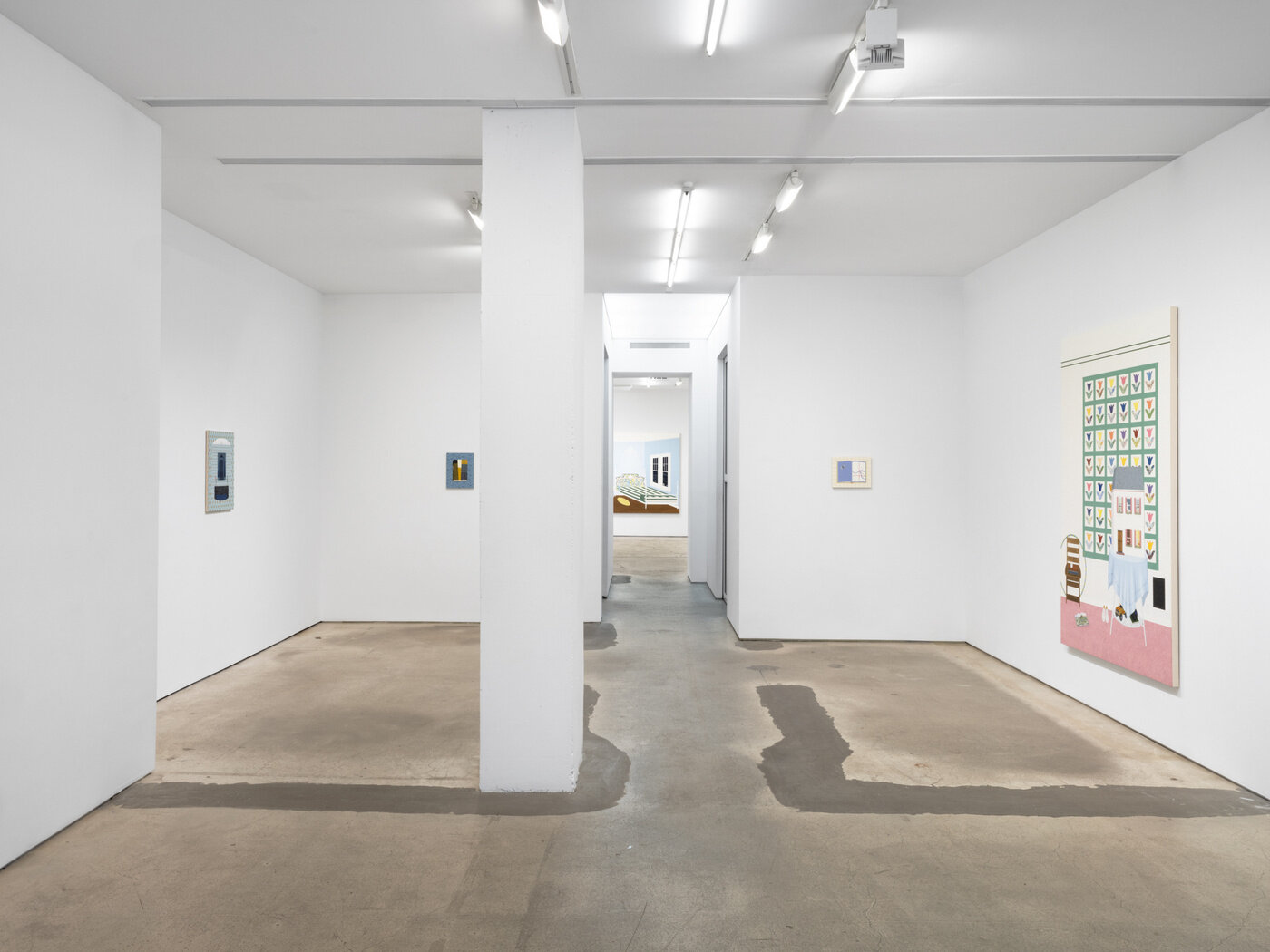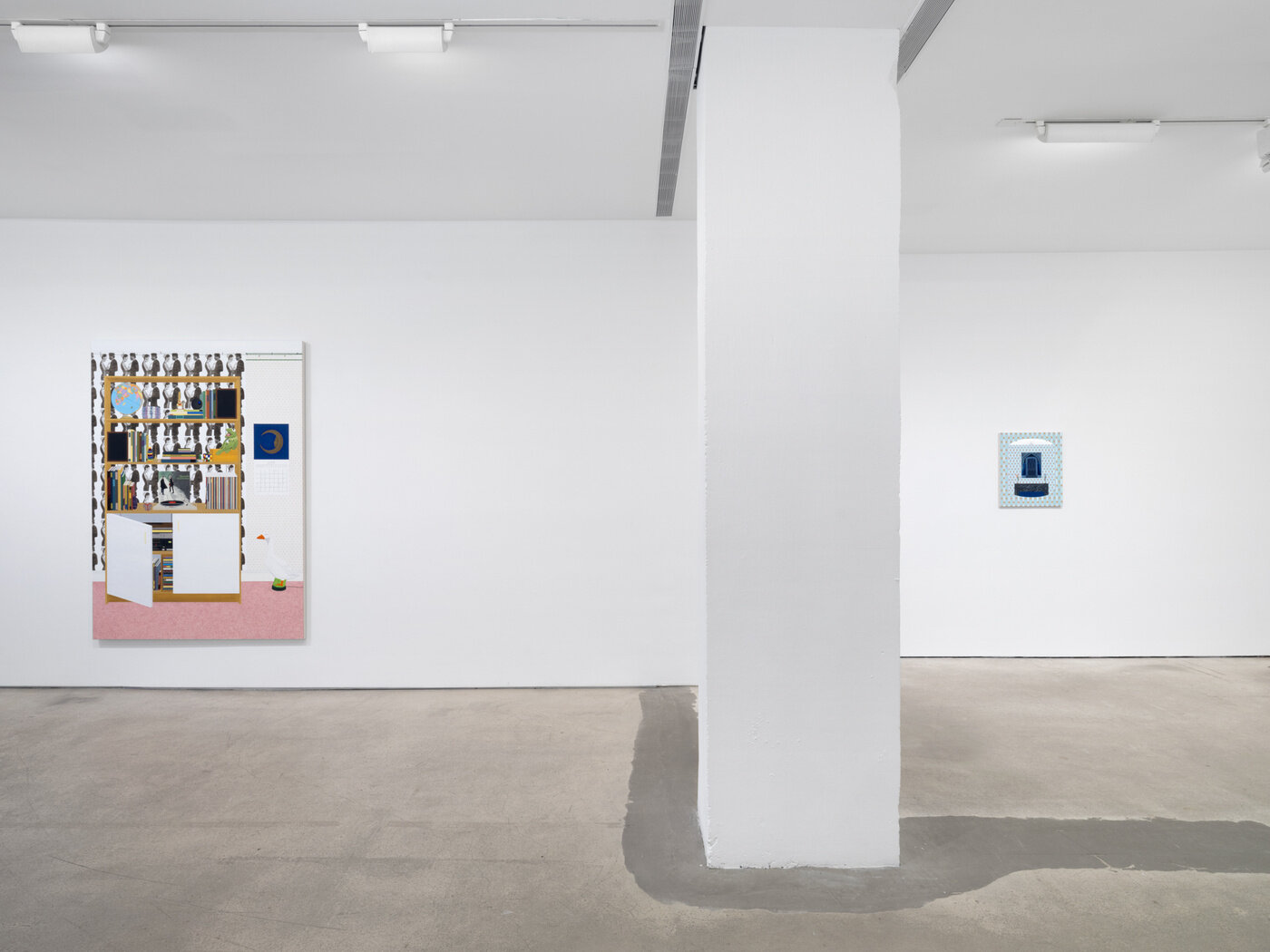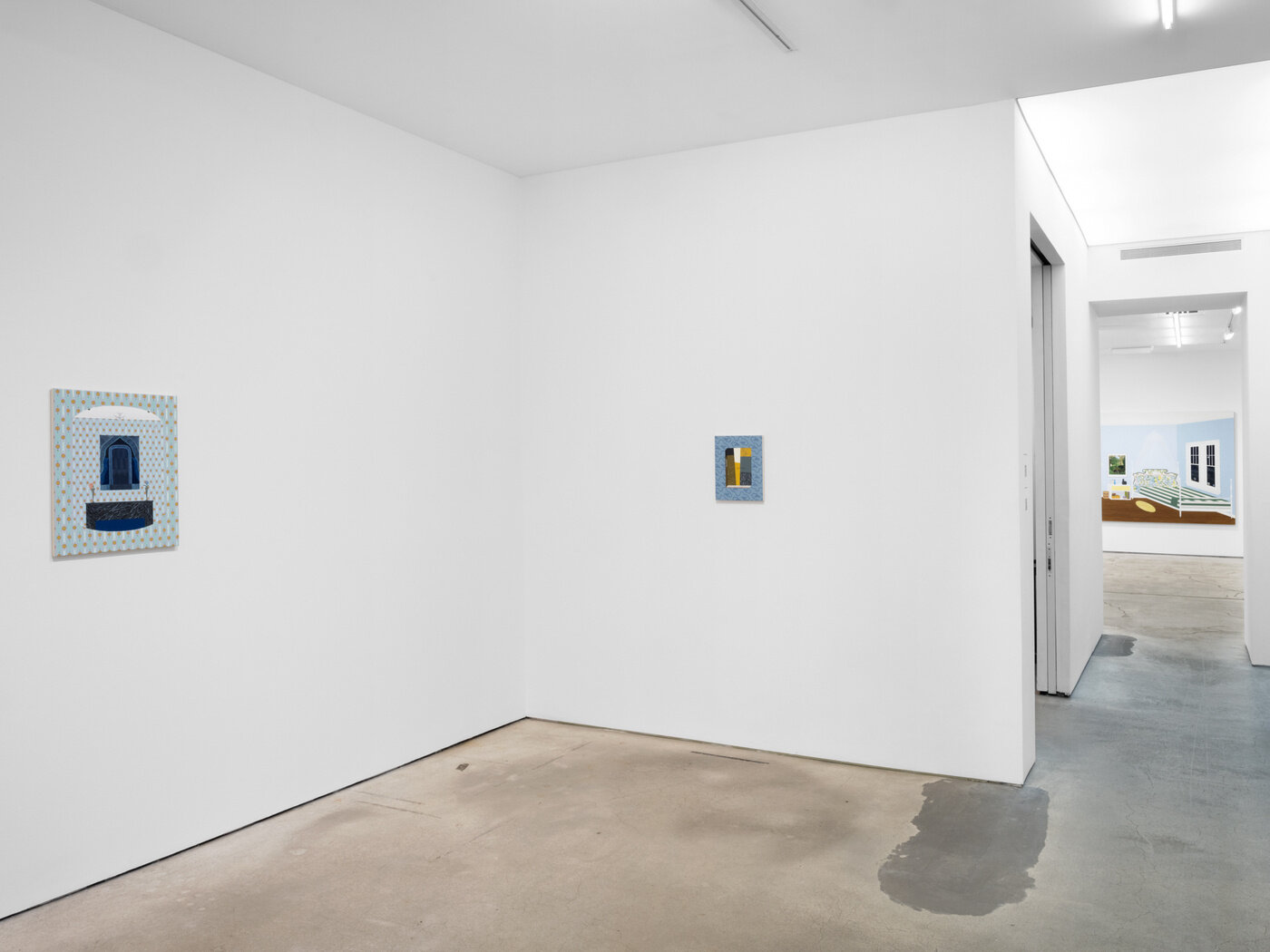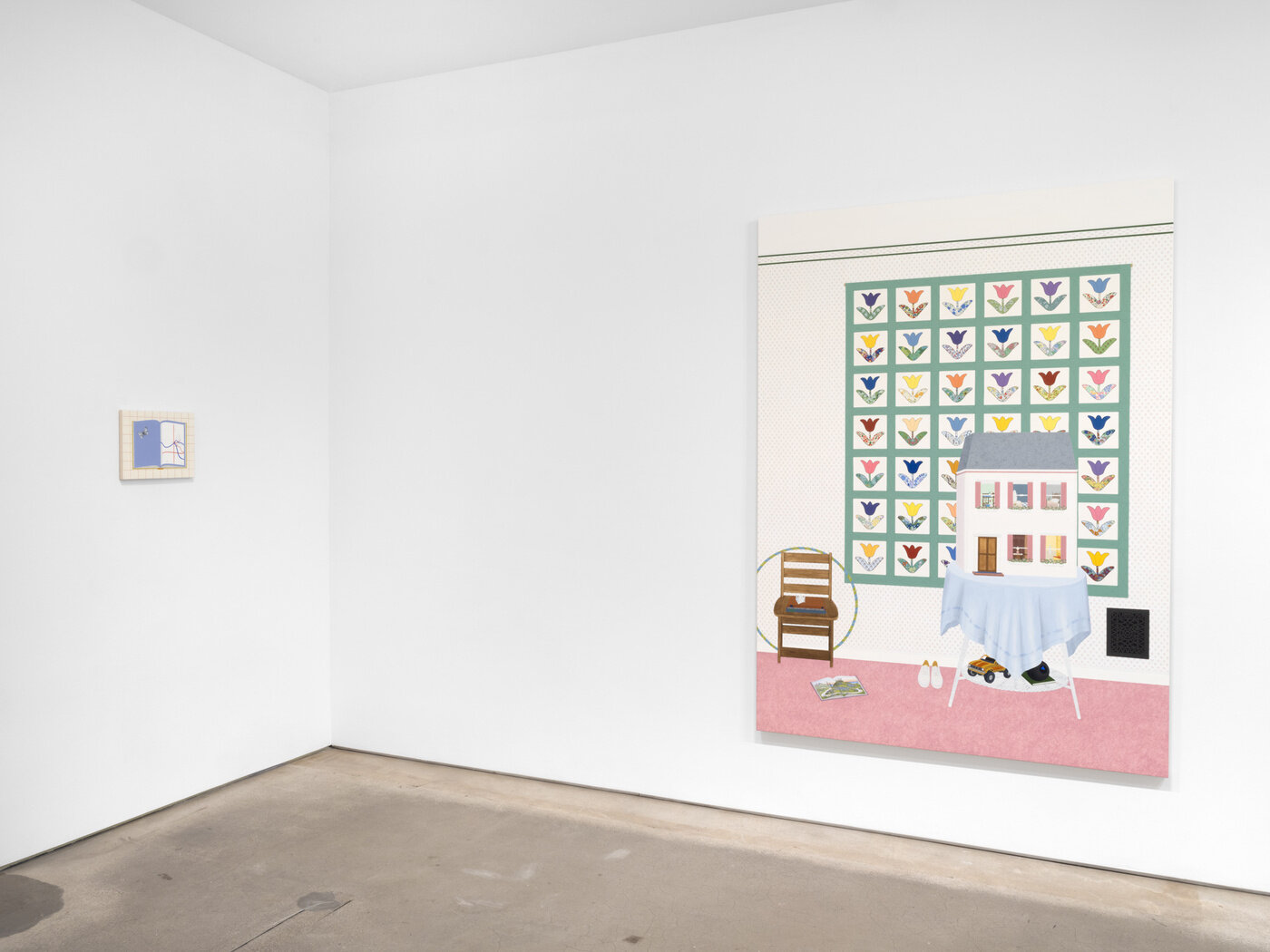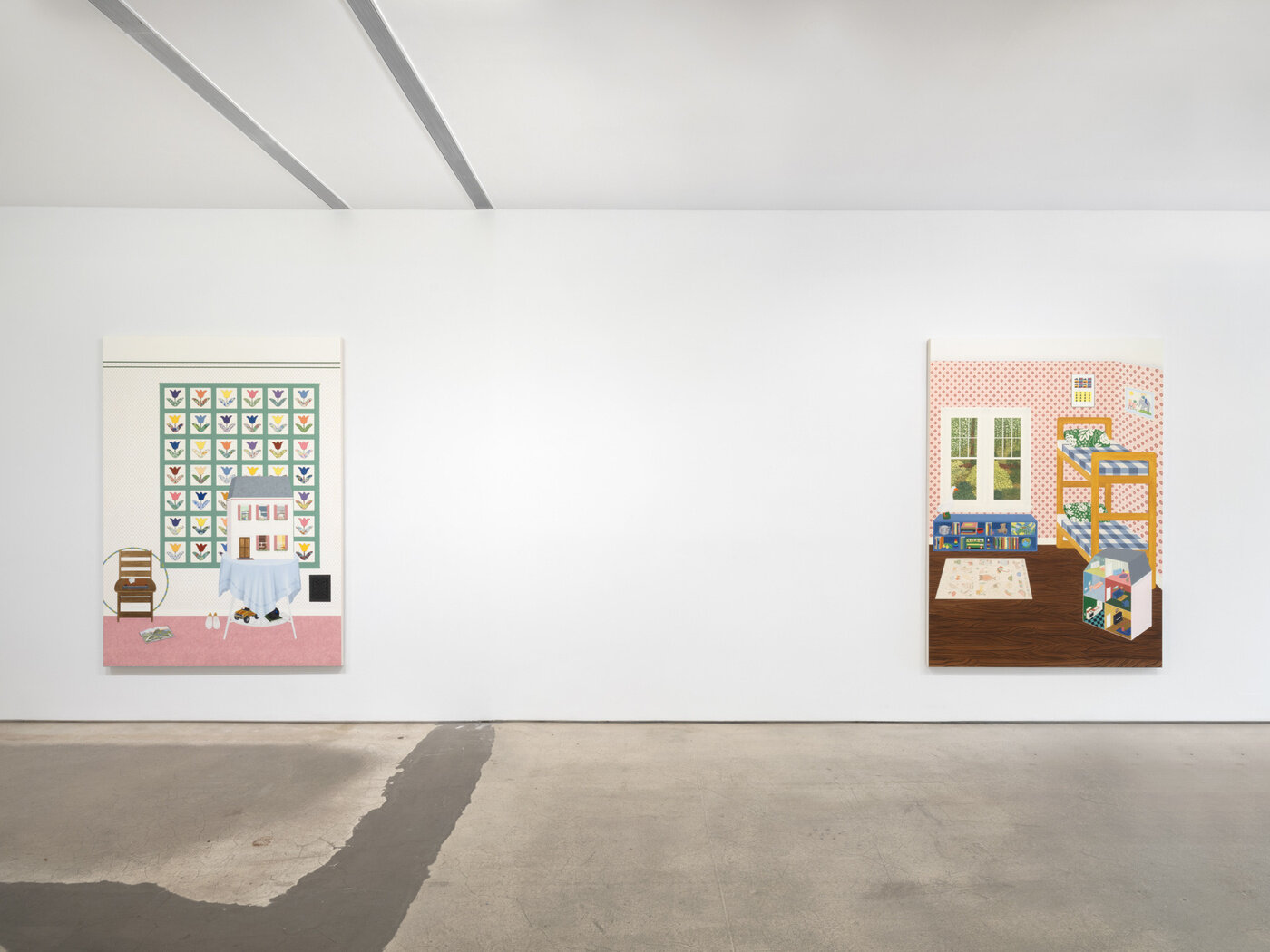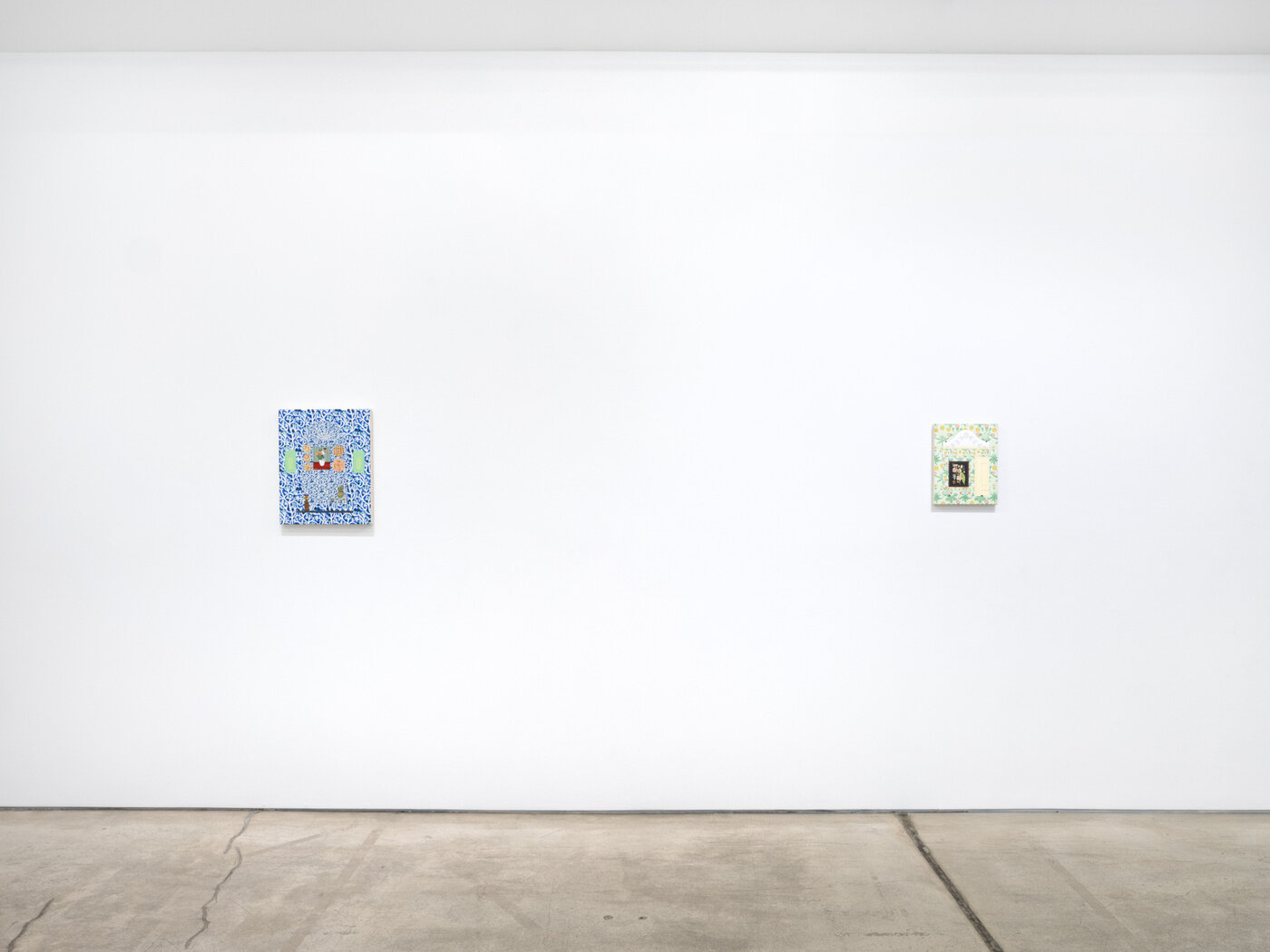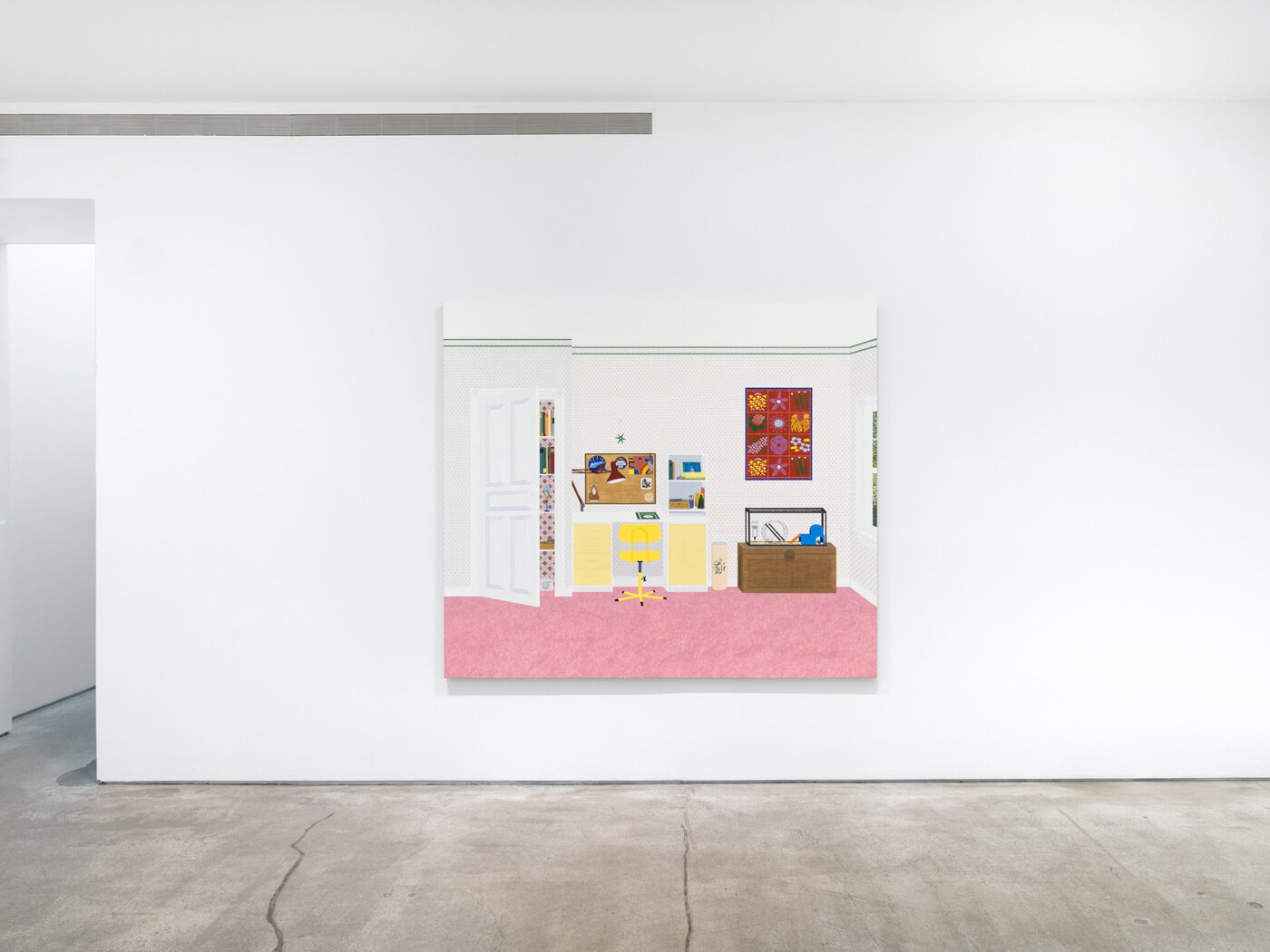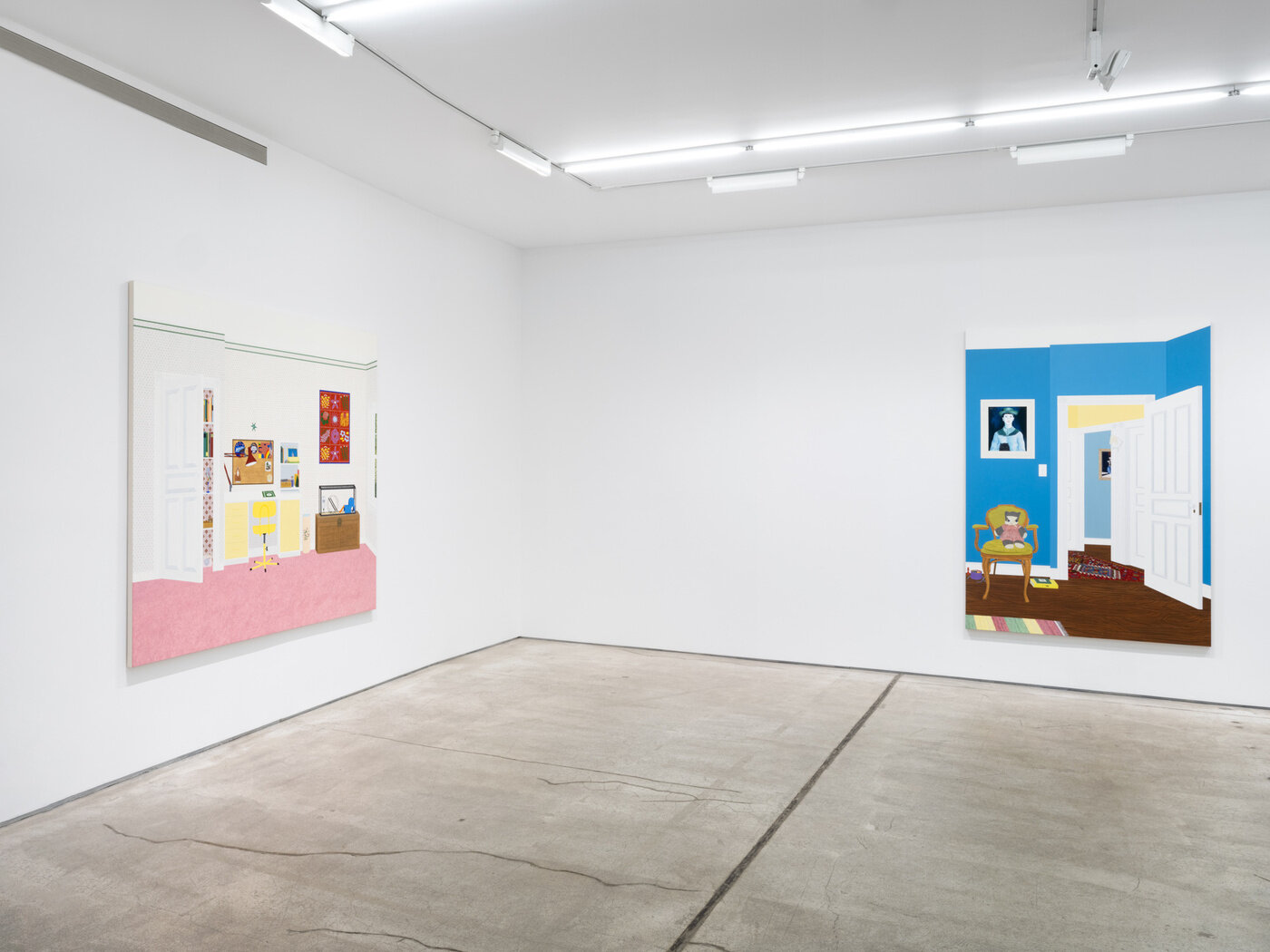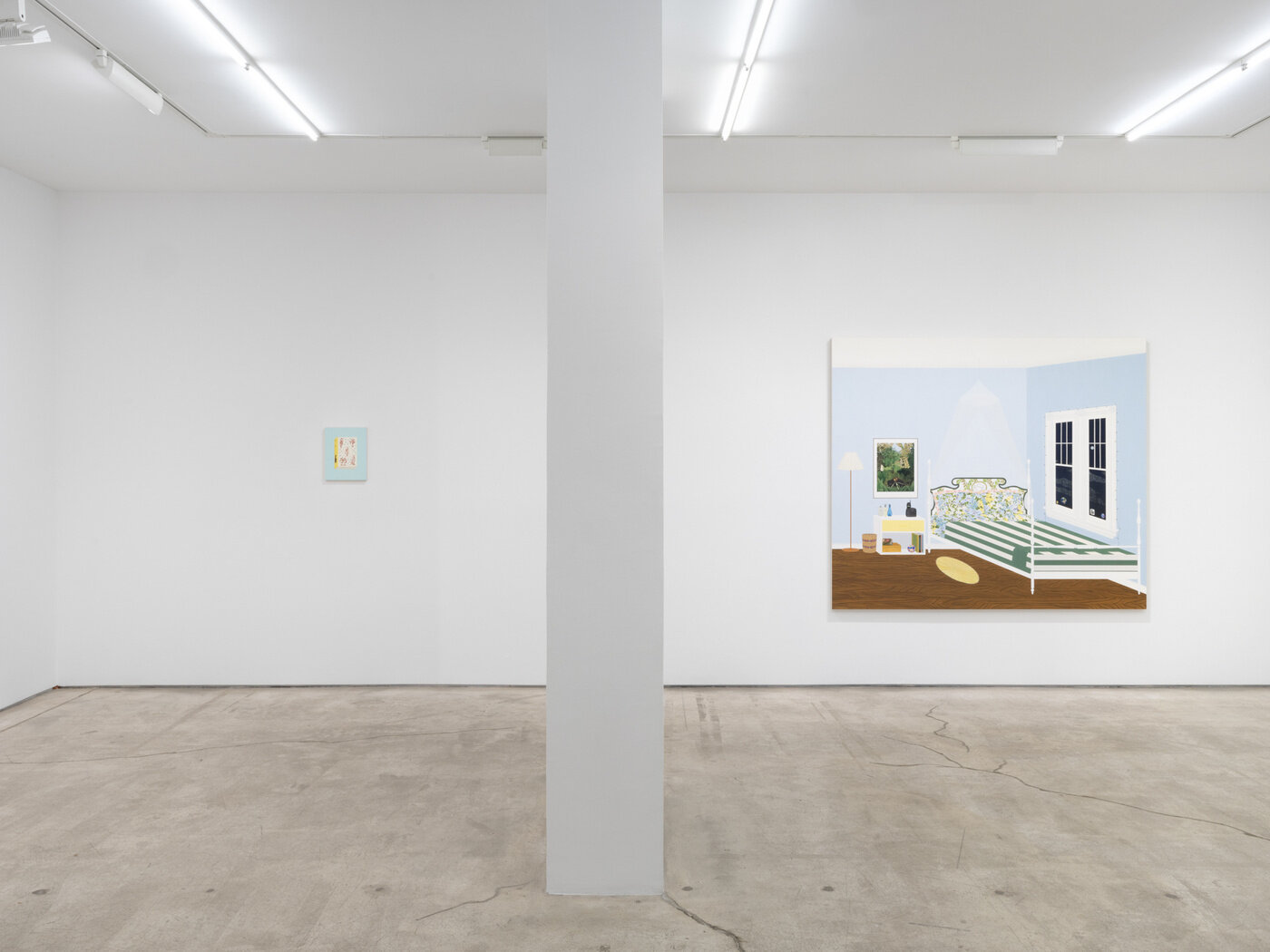Becky Suss: Greenwood Place
Works (Tap to zoom)
Press Release
Becky Suss
Greenwood Place
524 West 24th Street
May 12 – June 18, 2022
Opening reception Friday, May 13, 5–7PM
Jack Shainman Gallery is pleased to present Greenwood Place, a solo exhibition of new work by Becky Suss.
Large paintings depict Suss’s childhood bedroom as recalled from different times in her life, alongside intimate, smaller paintings of books and mirrors. Together, they explore the mutability of memory and the ways it is held in physical spaces using the artist’s characteristically detailed and hyper flattened style. They also delve into the worlds children create for themselves that become the foundations for their adult selves. These can be bedrooms, lockers, or forts in the woods, but they all encapsulate the human impulse to create a space of one’s own.
During the early pandemic, Suss moved her studio to her childhood home—still occupied by her parents—for support with her own toddler. Creating work in this space collapsed the divide between her domestic and professional life, as well as the greater sense of past and present. Mining the creative potential born from both spatial and conceptual limits, Suss’s excavation of her younger self’s bedroom builds upon the themes of domesticity, interiority, and memory in her practice.
A girl’s bedroom, like other spaces that children carve out for themselves, transforms with age while remaining a backdrop for exploration and growth. It is a zone of identity formation and decision making. It is a social space, and the site of an at times fraught collaboration between parents and their offspring, especially in preparing the child to negotiate boundaries and compromise. When the child no longer occupies the home, it becomes a barometer of sentimentality. Do the parents keep the bedroom as a shrine, or convert it immediately into a gym or office? These decisions reveal the significance of the change versus nostalgia dichotomy for all of us, a theme that Suss continually returns to.
Suss presents historical and personal details throughout her paintings like clues, rewarding close attention. Keepsakes on a corkboard, small tokens arranged on a closet shelf, or a music player in 8 Greenwood Place (1988-93) evoke a certain time and place. These same elements can be found across other works—a sticker migrates to a windowpane, or the wallpaper pattern inside the closet repeats elsewhere—allowing us to trace the objects through time in a way. These are the concrete touchstones found within worlds of self-formation.
Suss also considers the ways in which imaginary worlds can be grounded in actual spaces and objects, particularly as they veer into fantasies that oftentimes feel just as tangible to the reality of their young inhabitants. Gaps in memory may be filled with references to books or fiction, much in the way that the stories we read are absorbed into our psyches and create the people we are. An ongoing theme Suss continues to investigate, this is seen in 8 Greenwood Place (1985-88), where each window in a dollhouse reveals an interior from a different children’s story, recalling a recent series that centered on young adult literature.
In looking glass house #1, Suss explores perspective and scale in intimate paintings that use reflection and inversion to depict multiple, opposite views at once, ultimately fragmenting the picture plane and disturbing our sense of space. The title is a reference to Through the Looking-Glass by Lewis Carroll, in which the protagonist Alice climbs through a mirror’s reflection to enter the fantastical, illogical world beyond. With these portals and careful departures from exact reality, Suss provides access to intangible, psychological dimensions that are ever shifting, as well as the universal strangeness of childhood.
In this way, the series explores the tensions between historical accuracy and the imagined or fictional. Interested in the theory of memory reconsolidation, Suss has deliberately mined her own past, and in doing so, fundamentally altered her memories with each revisitation, imagined detail, or narrative. As she describes, “You can’t separate the original ‘truth’ from the departures from the original event. They all become one thing… That has become a huge part of my work, to think about legitimizing the discrepancy in memory… this memory, that memory, and every omission and change—they’re all equal and they tell us about who we are.”
